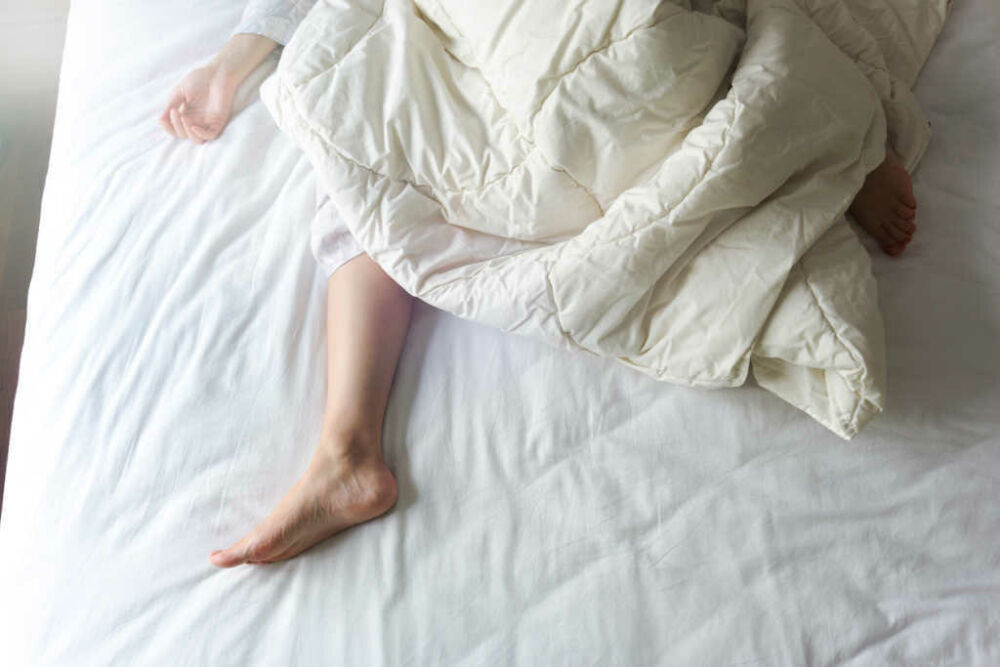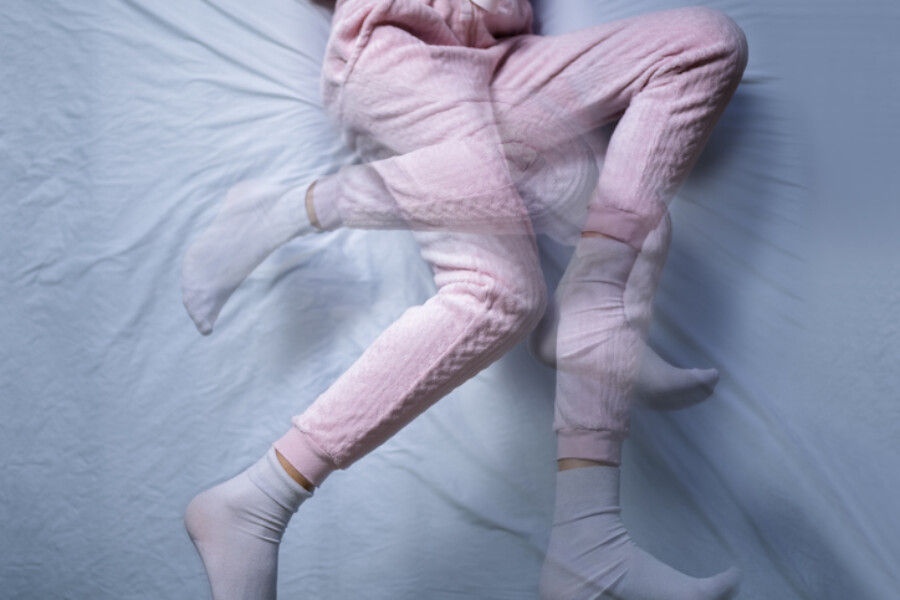
Treatment for Restless Legs Syndrome
Restless Legs Syndrome (RLS) is a common condition, affecting 2-4% of the adult population. Although its cause is not completely known there may be an association between RLS and chronic venous insufficiency.

For people who do not suffer from restless legs syndrome, their first exposure to the intense, uncomfortable symptoms may have been the flood of television commercials that first appeared several years ago advertising medications used to treat the condition.
Those learning about restless leg syndrome (RLS) for the first time may have been shocked to discover the itching, pulling, creepy-crawling, tugging, throbbing, and burning sensations associated with this distressing movement disorder.
We spoke to vein doctor Gregory D. Ruth, MD, DABVLM, RPVI, RVT, lead physician at Center for Vein Restoration clinics in Hamilton, NJ, and Howell, NJ, about the symptoms, causes, and treatment options for restless leg syndrome (RLS). Dr. Ruth is an expert in diagnosing and treating venous (vein) disorders. He is certified by the American Board of Surgery and the American Board of Venous & Lymphatic Medicine (ABVLM). He is a registered physician in vascular interpretation (RPVI) and is a registered vascular technologist (RVT).
Restless legs syndrome is a common condition marked by unpleasant sensations in the legs, sometimes described as an "ants crawling feeling" that briefly goes away when the person stands and moves. Dr. Ruth cites the National Institutes of Health's four diagnostic criteria for restless legs syndrome, which include:
Symptoms of vein disease often mirror RLS, including leg heaviness, aching, and tiredness, sometimes accompanied by cramping, swelling, and leg discoloration. Both conditions tend to be chronic, typically cause discomfort later in the day, and temporarily improve with movement.
To understand RSL, one must first understand the definition of “syndrome.” Dr. Ruth clarifies that a "syndrome" is a condition characterized by its group of symptoms. A syndrome describes what is happening to the patient, he adds. "Syndrome" is different from a "disease" where one specific pathological process (or sometimes multiple processes) can be identified.
Dr. Ruth explains that RLS is divided into two groups, primary and secondary disease:
Primary restless leg is idiopathic, meaning that it arises spontaneously with no known cause. It is a poorly understood neurological condition involving iron metabolism and irregularities with dopamine receptor activity in the brain. It is actively being studied by the National Institutes of Health and several other research centers, says Dr. Ruth. The primary form of the disease is currently treated with medications including Mirapex and Requip (dopamine promoters), gabapentin (anticonvulsant and nerve pain medication), and benzodiazepines (psychoactive drugs known as tranquilizers), all of which have side effects.
Secondary restless leg has a known cause. These can include iron deficiency anemia, several types of back nerve pain, autoimmune diseases, chronic Lyme disease, diabetes, kidney disease, certain medications, and vein disease. Vein disease is the cause of 25 percent of RLS cases.
Dr. Ruth depicts superficial veins in the legs like the trunk of a tree. These veins have poor circulation and tend to stretch out. Inside these veins, the tiny valves responsible for returning blood to the top of the leg (and eventually to the heart) can wear out. The blood in these veins flows backward (called reflux) and pools in the calves. This pooling creates an extra volume of blood that produces pressure and leads to chronic inflammation," explains Dr. Ruth.
Dr. Ruth explains that chronic inflammation in these veins is visible under a microscope. This "constellation of inflammatory material around these veins is believed to cause restless legs syndrome," he adds.
By definition, a person with RLS cannot resist the urge to move their legs. Wearing compression stockings can help lessen the urge to move; however, the only way to provide temporary relief is to get up and move. As the disease progresses, it gets harder to achieve even temporary relief, and treatment becomes necessary to maintain quality of life.
A diagnosis is made when a patient fits the National Institutes of Health's four diagnostic criteria (as outlined above). The existence of a secondary cause such as anemia or kidney disease can help make the diagnosis easier.
While there is no blood or other test to diagnose restless legs syndrome, people suspected of having RLS due to vein disease can be evaluated by ultrasound.
Treatment is available for the 25 percent of RSL cases for which vein disease is the cause. Simple procedures that close the superficial veins are performed in the office and take about 15 minutes. The body absorbs these unnecessary veins, rerouting the blood to healthier veins. When the body absorbs the vein, it also takes with it the inflammation associated with the vein—and symptoms of RLS tend to improve.
For patients whose RLS is caused by (venous insufficiency) vein disease, 80 percent improvement can be expected using vein closure procedures. Dr. Ruth cites a 1995 study that found that 98 percent of patients had significant improvement in RLS symptoms shortly after completing sclerotherapy treatments. A study from 2008 found that 89 percent of patients had significant relief after laser ablation, with an overall 80 percent improvement in symptoms.
Because vein disease is chronic and progressive, patients may need additional "touch-up" sessions to keep circulation healthy after treatment. According to Dr. Ruth, about eight percent of patients who were treated using sclerotherapy will need further treatment one year out. Twenty-eight percent of patients required another treatment about two years out. These statistics are similar to the recurrence rate of symptoms after treatment for generalized vein disease.
Don’t ignore the troubling symptoms of RLS and hope it will go away on its own. The chances are that the symptoms will worsen. The vein care specialists at Center for Vein Restoration can confirm RLS with thorough health history and ultrasound—and develop a personalized treatment plan to provide the symptom relief you need.
Scheduling an appointment with a vein specialist is easy!
Schedule an appointment online or call 240-965-3915 to speak to a knowledgeable patient services representative who can answer all your questions. Treatment is covered by most insurance carriers, including Medicare and Medicaid.